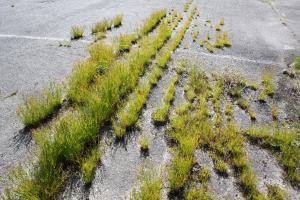Cross Posted from Deep Green Resistance Newswire
By Alex Budd / Deep Green Resistance Cascadia
Wherever there has been oppression, there has been resistance. Despite the narratives that are drilled and forced into our heads—narratives of the exceptionality and futility of resistance—the history of civilization is chalk full of individuals, groups, movements that stood in the face of subjugation and cruelty to fight for a better world.
This is as true now as it has ever been, whether we’re talking about underground and aboveground groups finding indirect ways to collaborate in defending Russian forests, Ogoni militants attacking pipelines in the Niger Delta, farmers in North Dakota toppling interstate electrical transmission lines, Norwegians sinking whaling ships, Saudi Arabians using computer viruses to attack the world’s largest oil company, Germans sabotaging sport hunting, bombings of nanotechnology labs in Mexico, or road occupations defending forests in Borneo. From the Luddites to the Naxalites, militant action against ecocide has a proud history and is nothing new.
Beyond these—the organizations and groups whose names we know—are an untold number of actions and actors, working on their own or in small groups to strike blows (however small) against the industrial machine. They often receive no recognition, their names and deeds don’t make the news and the glued locks on the slaughterhouse door or slashed tires on the logging truck are attributed to apolitical and trouble-making adolescents.
But they continue—the faceless and the nameless, the mysterious who help to make sure that this war has two sides. Every year, hundreds of brave individuals enact their convictions: thousands of animals are freed from captivity & torture, locks are glued, equipment and vehicles torched, roads torn up, trees spiked, hunting lodges & towers sabotaged, cell phone towers destroyed, and more.
Militant action against the horror of civilization isn’t a mystical idea or lofty concept. Too often, it is made to seem something entirely unreal, impossibly distant from the world we actually live in. It is made out to be the work of mythical figures or shadowy organizations, compared to whom we are nothing of note. Real resistance is something that happens ‘out there’, far away from anything resembling our own lives.
But this is entirely untrue.
While the particular motives and passions of individual actionists inevitably vary, there are no superheroes, just those ordinary people who have moved beyond fear and into action. Similarly, no one is born knowing how to wire explosives or sabotage a train, but that hasn’t stopped pipelines from exploding or trains from being shut off. Despite what the dominant narratives tell us, it is not exceptional or unusual to fight back against brutality.
Tangible acts of resistance take place every day, building on one another slowly gradually. In the last year, there have been at least several hundred actions, and those are just the ones that were reported on websites like ‘Bite Back’ or DGR’s new Underground Action Calendar. And such action is nothing new either; quiet acts of sabotage against development and infrastructure projects—be they dams or railways—are forms of resistance that go back generations; resistance that persists through the silence and the years. Though these individual actions may not be much in and of themselves, they are not alone.
They are in the same spirit as the trees in a city, fighting to become a forest; as the grasses and flowers pushing up cracks through asphalt and concrete; as the crazy raspberry ants that swarm into electrical boxes and chew through wires to short circuit computer systems; as the salmon that throw themselves relentlessly against (excruciatingly) slowly crumbling dams; as the monsoon rains that wash away bridges and rail lines; as the blizzards that topple power lines; as the forest fires that race through McMansion subdivisions.
Life doesn’t just want to live—it fights to live.
And that fight isn’t static; it isn’t an isolated moment in time. It’s a struggle growing, being cultivated by generation after generation of those individuals who say “enough” and take action, and by those who support them and tell their stories, replanting the seeds and watering a maturing culture of resistance.
Resistance is fertile. But we should also remember that it isn’t a stagnant fertility; it is incredibly active and dynamic. It isn’t a passive seed waiting to be planted; it has been in the soil for generations, slowly growing and spreading roots and tendrils and pushing up through cracks in the asphalt that have been decades in the making. With it grows the possibility—and indeed the promise—of that better world for which so many yearn and fight. As Arundhati Roy said, “another world is not only possible, she’s on her way. Maybe many of us won’t be here to greet her, but on a quiet day, if I listen very carefully, I can hear her breathing.”
Time is Short: Reports, Reflections & Analysis on Underground Resistance is a biweekly bulletin dedicated to promoting and normalizing underground resistance, as well as dissecting and studying its forms and implementation, including essays and articles about underground resistance, surveys of current and historical resistance movements, militant theory and praxis, strategic analysis, and more. We welcome you to contact us with comments, questions, or other ideas at [email protected].

